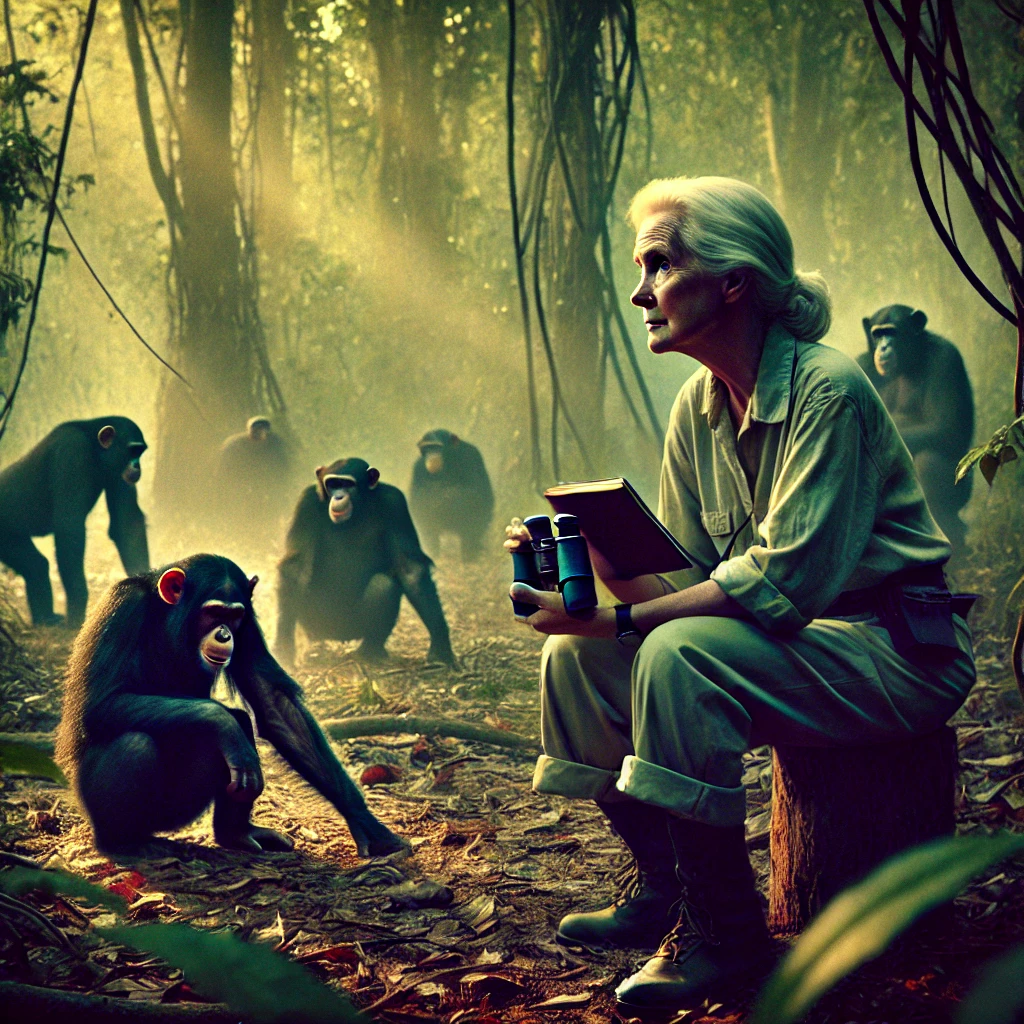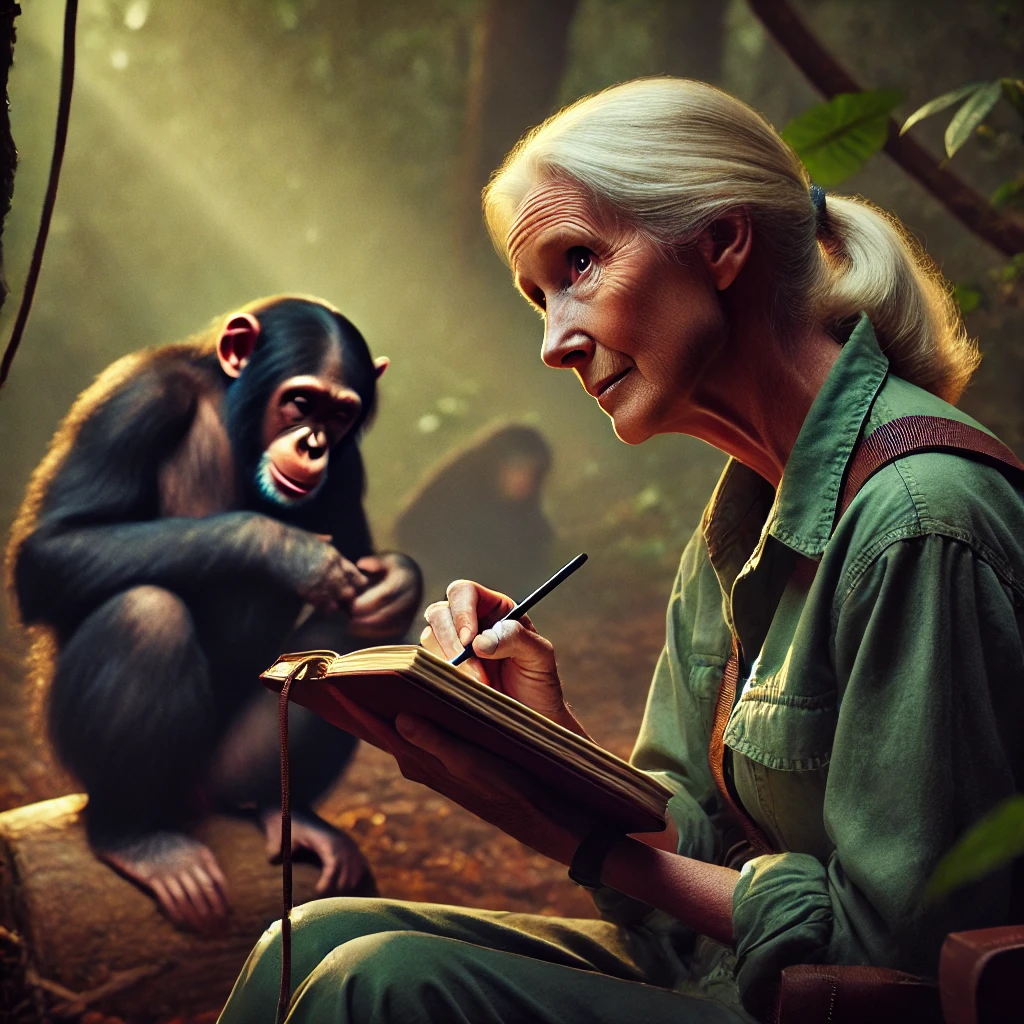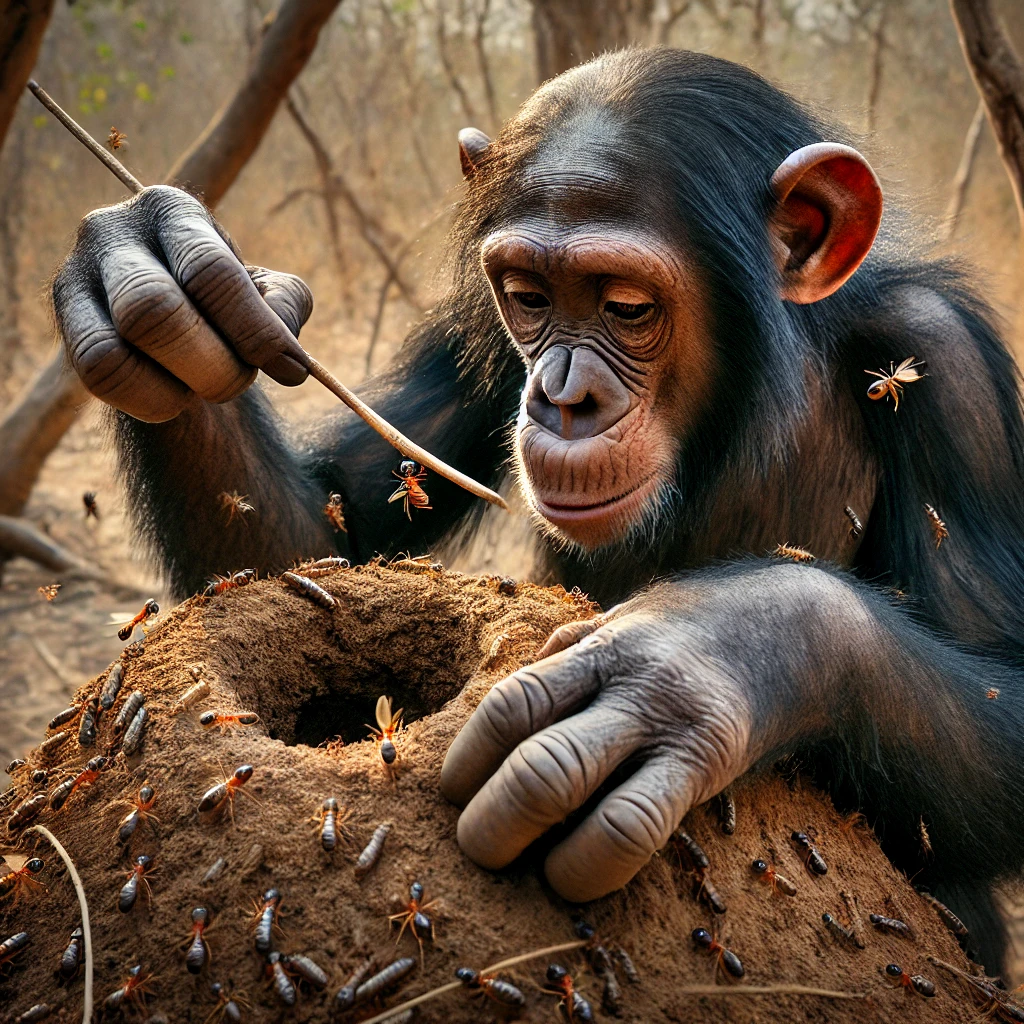On November 4, 1960, renowned primatologist Jane Goodall made a groundbreaking observation that would revolutionize the understanding of primate behavior and intelligence. While studying a group of chimpanzees in Gombe Stream National Park in Tanzania, Goodall witnessed a chimpanzee named David Greybeard using a twig to extract termites from their mounds. This remarkable moment not only highlighted the cognitive abilities of chimpanzees but also challenged long-held assumptions about the uniqueness of human intelligence.

The Journey of Discovery
Jane Goodall’s journey into the world of primatology began in the early 1960s when she was invited to study chimpanzees in Africa. Armed with little more than a notebook and her passion for wildlife, she set out to observe these fascinating creatures in their natural habitat. Goodall’s approach was revolutionary; she immersed herself in their environment, building trust with the chimpanzees and observing their behaviors over long periods.
Her observations were meticulous, capturing the social interactions, communication, and daily activities of the chimpanzees. However, it was the sight of David Greybeard using a stick to fish for termites that became a pivotal moment in her research. This act not only demonstrated the ability to use tools but also suggested that chimpanzees possess a level of problem-solving skills previously attributed solely to humans.

Challenging Preconceptions
Goodall’s discovery had profound implications for the scientific community. Until that time, tool use was widely considered a defining characteristic of humanity, reinforcing the idea that humans were fundamentally different from other animals. The realization that chimpanzees could make and use tools challenged this perspective and opened the door to new discussions about animal intelligence and behavior.
Her findings prompted researchers to reevaluate their definitions of what it means to be “human.” The ability to use tools is linked to cognition, culture, and the capacity for innovation. Goodall’s work helped lay the groundwork for the field of animal behavior, encouraging further research into the cognitive abilities of not only chimpanzees but other species as well.
The Legacy of Jane Goodall
Jane Goodall’s observation on that significant day in 1960 propelled her into the forefront of primatology and conservation efforts. Over the years, she has continued to advocate for the protection of chimpanzees and their habitats, emphasizing the urgent need to address environmental issues and the impact of human activities on wildlife.

Her pioneering research has inspired generations of scientists, conservationists, and animal lovers. The Jane Goodall Institute, founded in 1977, focuses on wildlife conservation, community-centered development, and the protection of chimpanzees and their ecosystems. Goodall’s message emphasizes the interconnectedness of all living beings and the responsibility humans have to protect the natural world.
The observation made by Jane Goodall on November 4, 1960, marked a transformative moment in the understanding of animal behavior and intelligence. By witnessing a chimpanzee use a tool, Goodall not only challenged preconceived notions about human uniqueness but also laid the foundation for future research into the cognitive capabilities of animals. Her work continues to resonate today, reminding us of the importance of empathy, conservation, and the ethical treatment of all living beings. Goodall’s legacy as a scientist and advocate serves as an enduring inspiration for those committed to understanding and protecting the natural world.
